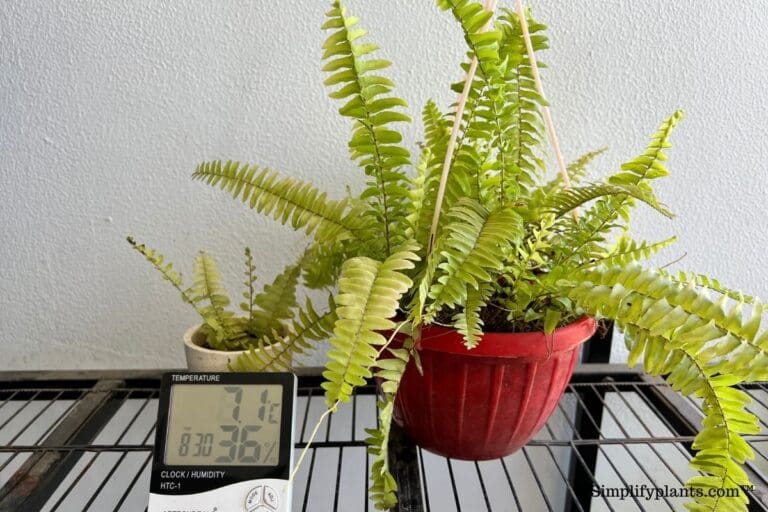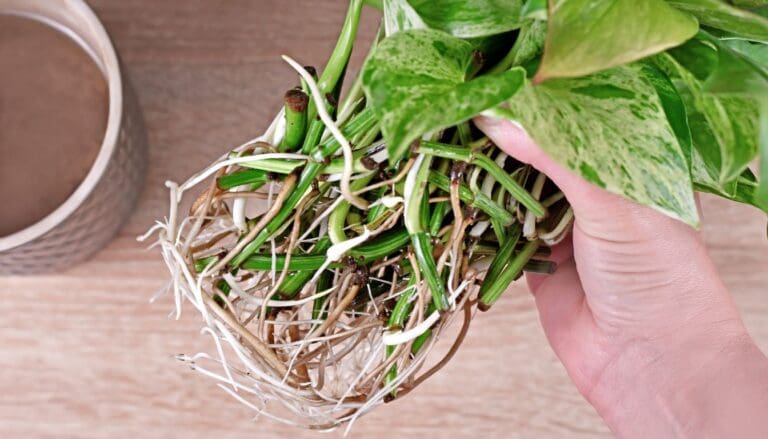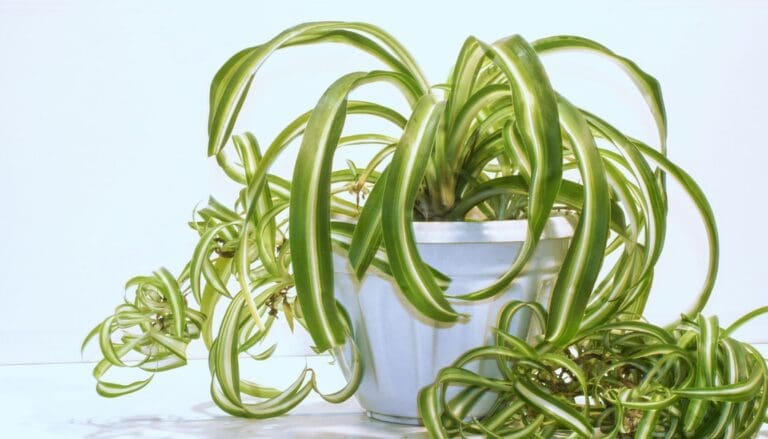Spider Plant Care Guide: Easy Tips for Thriving Houseplants
Spider plants, with their relaxed demeanor and charmingly variegated leaves, have shimmy-shaked their way into many hearts and homes. If you’re like me, you might have wondered what makes these green pals thrive.
Guess what? It isn’t rocket science! I’ve learned that providing the right environment and a touch of TLC can turn your spider plant into the leafy best friend of your dreams. 🌱
Have you ever noticed how spider plants seem to offer endless sprouts of mini-me’s? It’s like they’re throwing a plant party, and everyone’s invited! Seriously, a well-cared-for spider plant is the gift that keeps on giving. You don’t need a green thumb—just a few simple tips to keep those spiderettes swinging.
But hey, you might think that caring for plants is as tricky as underwater basket-weaving. Fear not, my fellow plant enthusiast!
With a little guidance and some good, old-fashioned plant talk (yes, I chat with mine—don’t judge!), your spider plant will not only survive but flourish. Let’s make those plant parents proud, shall we? Share your own spider plant success stories in the comments—I’d love to hear them! 🌟
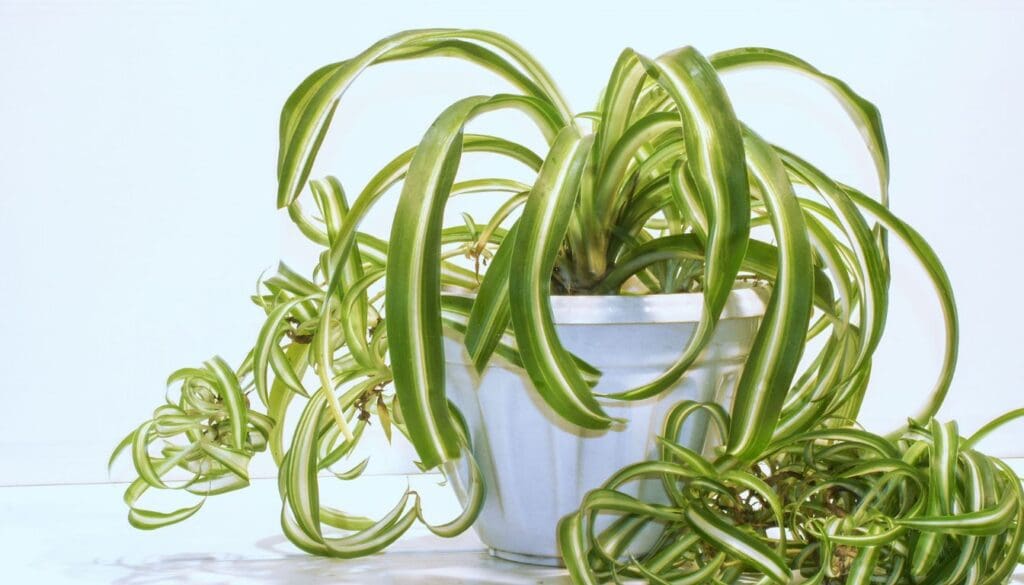
Please note: Simplify Plants is reader-supported. Some links in the post are affiliate links and I get a commission from purchases made through links in the post.
Choosing the Right Spider Plant
When I set out to get my first Spider Plant, I knew it was all about finding the right fit for my home ambiance. Here’s a quick guide on picking your green buddy!
Types of Spider Plants
There are a variety of Spider Plant (Chlorophytum comosum) types to choose from. Each one has its own unique flair! Look at these popular types:
- Variegated Spider Plant: This one boasts white edges and is the classic pick for new plant parents.
- Reverse Variegated Spider Plant: Sporting white stripes in the center with green edges, it’s a twist on the classic!
- Solid Green Spider Plant: A rarer find with all-green leaves, giving a lush, monochrome look.
Have you spotted these around? Maybe in a friend’s house or an office? They’re not just a pretty face; they also help to purify the air! 🌿
Where to Purchase
Wondering where to get your hands on one of these beauties? Here are my go-to places:
- Local Nurseries: They often have the healthiest plants and can provide expert care tips.
- Online Plant Shops: Convenient, with a wide variety of sizes available.
- Home Improvement Stores: You might stumble upon a Spider Plant while shopping for other household items.
Are you ready to spruce up your space with a Spider Plant? Or maybe you have a pro-tip on where to find the best ones? I’d love to hear about it in the comments below! Don’t forget to share this with your fellow plant-loving pals! 🌱✨
Essential Growth Conditions
I’ve got the scoop on how to make your spider plants thrive! It’s all about giving them the right light and keeping them comfy with the perfect temperature and humidity. Let’s get to it and turn your thumb greener! 🌿✨

Sunlight Requirements
Ever put on sunglasses inside? Yeah, me neither! Spider plants are the same when it comes to light – they prefer it bright but filtered. Can you imagine them in tiny sunglasses? 😎
Direct sunlight? Nope, it scorches their lovely leaves. Aim for a spot that gets plenty of indirect sunshine. A north or east-facing window does the trick. It’s like the perfect suntan for your plant—golden but safe!
Temperature and Humidity
Imagine your spider plant on a tropical vacay because they dig the same vibes – cozy and not too dry.
Keep the temp moderate, ideally between 60°F to 80°F (16°C to 27°C). Too chilly or too hot, and they might protest by slowing growth.
And humidity? Your spider plant loves it like a spa day – aim for about 50% to 60% humidity.
If your air’s drier than a cornflake, maybe mist them occasionally or employ a humidifier. How’s that for pampering? 💨🍃
Planting and Repotting
When it comes to keeping our green friends thriving, knowing the how and when of planting and repotting is key. Let’s dive in and get our hands dirty – the right way!
Soil Composition
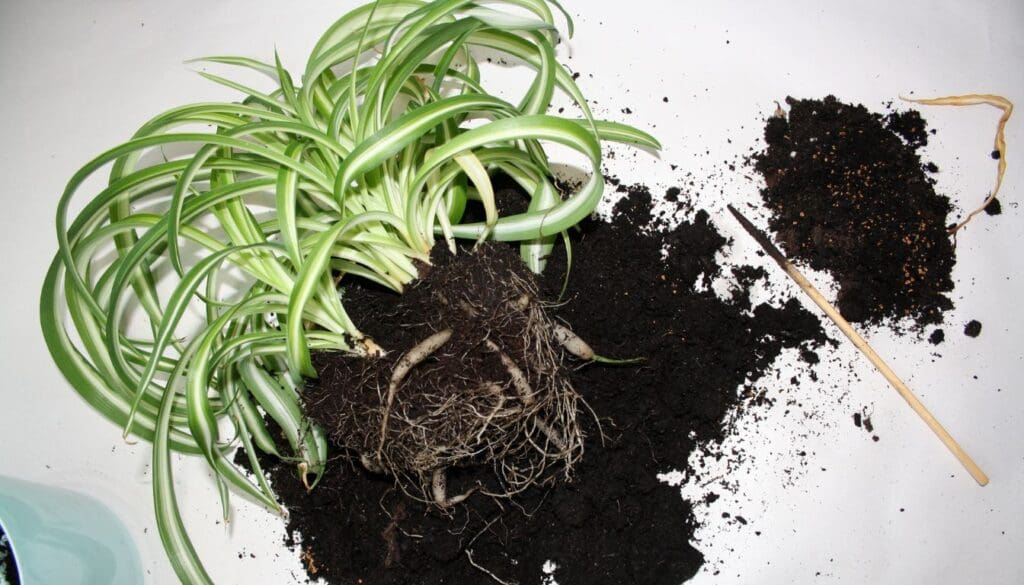
What’s the magic behind a healthy spider plant? 🪄 Soil that drains like a dream! I always go for a well-aerating potting mix that keeps the roots breathing and avoids water logging.
You can mix perlite into regular potting soil to amp up that drainage. Remember, soggy soil is a no-go for these leggy beauties!
Choosing the Right Pot
The pot you pick is more than a home for your plant; it’s its castle! 👑
When I choose a pot, I make sure it’s one size larger than the current one – this gives my spider plant plenty of room to stretch its roots.
Also, I’m a big fan of pots with drainage holes. They’re not just convenient, they’re a lifesaver!
Repotting Steps
- Timing: I check the roots – if they’re playing twister at the bottom of the pot, it’s game time for repotting!
- Gentle Removal: Before lifting the plant out, I give it a drink or let it soak for an hour to make it easy-peasy.
- Root Care: Once it’s out, I check the roots for any that look unhappy (brown or mushy) and give them a trim.
- New Home: I place my plant in the new pot with some fresh soil and ensure the root ball’s top is about an inch below the rim.
- Settling In: I give it a good watering and find a cozy spot with indirect sunlight to help it settle in.
That’s it! Have you repotted your spider plant lately? Share your experience or ask for tips in the comments. Let’s grow this community one repot at a time! 💚🌱
Watering Practices
Getting the watering right is like hitting the jackpot for our green buddies! 😄 Let me guide you through the perfect splash routine for your spider plants.
Watering Frequency
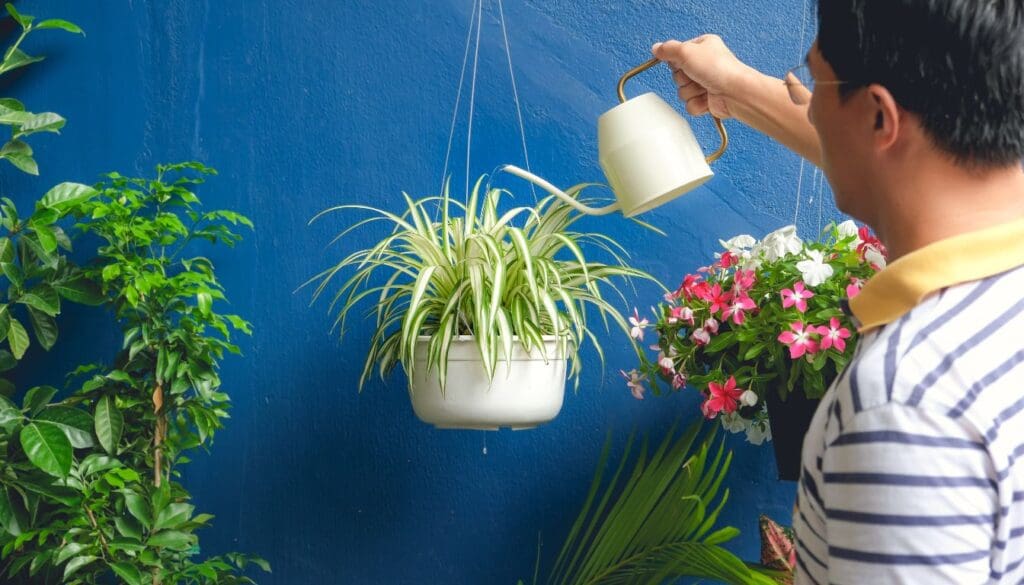
I know you’re probably wondering, “How often should I water my spider plant?” The key is balance. You want the soil to be consistently moist but not soaked. Here’s a quick breakdown:
- Young Plants: In summer, I give my little greenies a drink twice a week—they’re thirsty! When it’s cooler, they lay off the water a bit.
- Mature Plants: They’re a tad more laid back, needing water once every couple of weeks in summer. And less often when summer takes a bow.
Remember, guys, always let the top 1-2 inches of soil dry out before reaching for that watering can again. It’s the Goldilocks zone—not too wet, not too dry!
Best Water to Use
Tap water? Rainwater? Let’s clear the confusion! If you’re using tap water, leave it out overnight; this helps some of the chemicals evaporate. 👍
If you can collect rainwater, your spider plants will throw a party—it’s their favorite!
But, if you’re anything like me and love convenience, room temperature tap water that’s been sitting out will do just fine.
Keep an eye out for fluoride or chlorine sensitivity though; browning tips on leaves are telltale signs.
Got any watering wisdom of your own to share? Drop your tips in the comments below! 💧🌱 #SpideyPlantCare
Feeding Your Spider Plant
Guess what? Just like us, our green buddies need a balanced diet to thrive! Who knew we had so much in common with our plant pals? 🌿😄 Let’s get right into making sure your spider plant gets all the yum it needs.
Fertilizer Types

Fertilizing your spider plant doesn’t have to be as complex as a coffee order at that fancy new café downtown—simple is often best. You’ll want to stick with houseplant fertilizer that’s balanced; look for those 20-20-20 numbers, which are like the jackpot for your leafy friend.
Liquid fertilizers are super easy to apply, but there are also slow-release pellets if you’re the “set it and forget it” type.
Fertilizing Schedule
When do you feed your spider plant? Think of it as giving it a little snack every now and then—don’t we all enjoy a good treat?
During the growing season (spring and summer), your plant’s metabolism is like that of a teen, it devours nutrients!
Fertilize every 2-4 weeks but once fall waves goodbye, dial it back to every 1-2 months.
In the winter, it’s chill time, so no snacks needed—your plant is probably binge-watching its favorite shows like the rest of us! 😉
Remember, moderation is key. Too much food, and it might get the plant equivalent of a tummy ache. Have you found the perfect feeding routine for your spider plant? Share your tips in the comments, and let’s help our green friends put down some healthy roots! 💪🌱
Pruning and Maintenance
I’ve discovered that regular pruning keeps my spider plants looking their best. Here’s how I make sure they stay healthy and lush!
Trimming Tips
If you’re like me, you spot those little baby spider plants popping up and can’t wait to give them a new home!
It’s as simple as snipping the baby stem near the base of the main plant. Pro tip: use a sharp pair of scissors for a clean cut. 💇♂️⚡
And hey, don’t toss them! You can pop the babies in a glass of water and watch them sprout roots in a few weeks. Have you tried propagating your spider plants? 🌱✂️
Remember to also cut away any brown tips, yellow leaves, or dead growth to keep your spider plant looking fresh. It’s a bit like giving your plant a haircut; you’re styling it to look its best! ✨
Cleaning the Leaves
Now, let’s talk about leaf care. These plants can collect dust just like my coffee table does!
But instead of a coaster, I give my plants a spa day by wiping them down with a soft, damp cloth. It’s amazing how a simple wipe can make those leaves shine!
Have you noticed how a clean plant seems to breathe better? That’s because they actually do. Keeping the leaves free of dust means better photosynthesis, which is like a superpower for plants! 💪🍃
Keep it up, and your spider plants will thank you by staying vibrant and full of life. Share your own pruning and maintenance tips below – I’d love to see how you keep your green friends happy! 🌿👀
Propagation Techniques
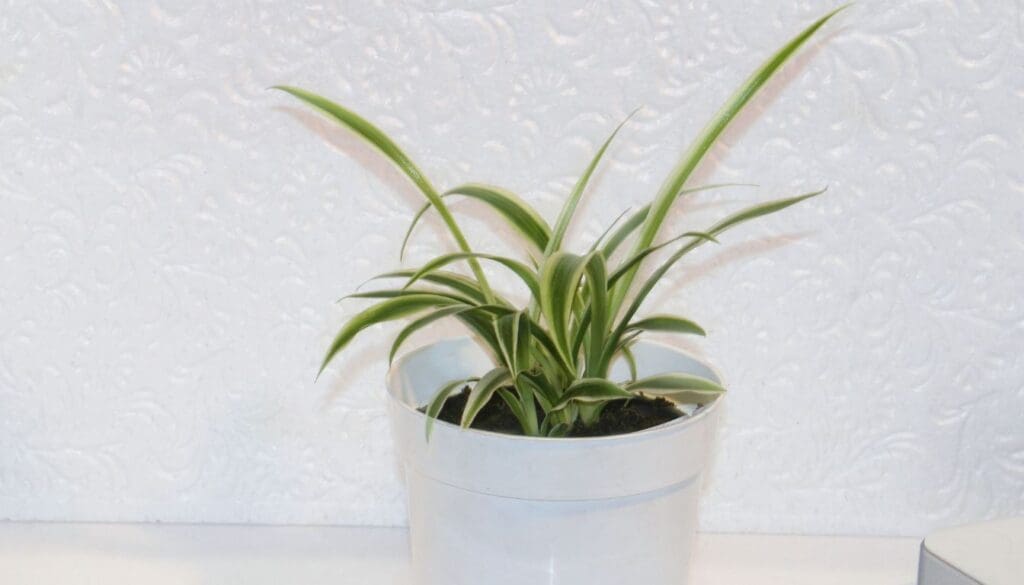
Ever wonder how to multiply your green buddies without a trip to the nursery? Let me guide you through some nifty propagation techniques for spider plants that are so simple, even your neighbor’s cat could do it (just kidding, please don’t let the cat near the cuttings 😸).
Propagation Methods
Spiderette Method
- Look for spiderettes: Those cute little plantlets that dangle from the mother like a kindergartener on monkey bars.
- Snip with care: Find your sharpest scissors and give the spiderette a clean cut.
Seed Method
- Not common, but possible: If you find seeds, plant them in a well-draining soil mix and keep them warm and moist.
Have you tried asking your spider plant nicely to make babies? No luck?
Thankfully, there are a couple of foolproof methods:
Spiderette Method: You know those spiderettes I mentioned? They’re your ticket to a plant baby boom.
Simply wait for a little growth, snip them off just right, and move to the rooting phase. Marvel as they take on a life of their own!
Seed Method: Like expecting a rare lunar eclipse, growing spider plants from seeds is a not-so-frequent joy, but if you do find seeds, it’s party time for your green thumb.
Rooting and Transplanting
Rooting in Water
- Find a vessel: A clear glass jar typically does the trick.
- Submerge the cuttings: Only the bottom part, please! No swimming lessons needed.
- Watch for roots: When they’re a couple of inches long, it’s moving day.
Rooting in Soil
- Prep your pot: Mix potting soil with something for drainage, like perlite.
- Plant and pat: Get the little guys tucked in and firm the soil gently.
Whether you’re a water rooter or a soil supporter, once those baby roots emerge (a proud plant parent moment, for sure), it’s time to transition your spiderettes to their own pots.
Just a heads-up, overwatering is the top party pooper here, so keep it on the drier side 💧.
So, tell me, what’s your go-to method for spider plant multiplication? Do you get a kick out of the water-rooting reveal, or are you a die-hard dirt digger?
Drop your propagation confessions below and let’s swap some plantastic stories! Don’t forget to share this with your fellow plant lovers! 🌱🎉
Troubleshooting Common Issues

Ever spotted something odd with your spider plant and thought, “Hmm, what’s up with that?” No worries! I’ve got the lowdown on common issues and quick fixes to keep your frond friend flourishing.
Pest Problems
Guess what? Even our leafy pals can have uninvited guests. If you see tiny bugs on your spider plant, don’t panic!
Often these critters are spider mites, aphids, or mealybugs—yuck!
To evict these pests, simply give your plant a shower with some lukewarm water, or use an insecticidal soap. Who knew pest control could be so, well, refreshing? 🚿
Diseases
Root rot, the party pooper of the plant world, might crash your spider plant’s vibe if it’s too wet.
Mushy roots? Time to repot with fresh soil and say, “Bye, Felicia!” to those soggy conditions.
Keep an eye out for brown or yellow leaves, which might be a sign of distress.
Remember, moderation is key—like only indulging in one slice of cake instead of the whole thing! 🍰
Environmental Stress
Plants, they’re just like us—they feel stress too!
If you see brown tips, it’s like your plant saying, “I can’t even with this tap water.” So, let’s switch to filtered water, shall we? 🥤
And if your plant’s leaves sport what looks like a sunburn, consider moving it out of that bright spot—think of it as reapplying sunscreen for your leafy buddy. 🌞
Always aim for that sweet spot where your plant can bask in bright, indirect light without playing “the floor is lava.
Remember, it’s all about catching the signs early and being the hero your spider plant deserves.
Got any plant-saving stories of your own? I’d love to hear them in the comments! Share away and let’s keep our green friends healthy together! 💪🌿
Benefits and Uses

Let me tell you why my spider plant is not just a pretty face in my living room.
First off, these stripy beauties are basically the superheroes of air purification. Studies have shown that spider plants are fantastic at absorbing indoor pollutants like formaldehyde and xylene—so, I get cleaner air just by having them around!
Want a secret tip? If you’re like me and sometimes forgetful with watering, spider plants are very forgiving.
They thrive even when I’m a little neglectful. 🙃
Plus, they’re non-toxic, making them pet-friendly. Can you say perfect plant pet? (Say that five times fast!)
Here’s a mini-table of their uses:
| Spider Plant Uses | Description |
|---|---|
| Air purification | Absorbs common household pollutants |
| Natural decor | Adds greenery and life to any space |
| Stress reducer | Looking at greenery can help reduce stress levels |
| Low maintenance | Easy to care for, even for beginners! |
When it comes to their benefits, I’ve heard people say that they can help reduce stress and boost your mood.
I mean, who couldn’t use a little mood booster sitting on their desk or windowsill? 😊
And let’s talk about baby spider plants—officially called pups. They dangle so cutely from the mother plant that you can even give them away to friends.
Ever thought of a plant as a gift that keeps on giving? Well, now you have! Sharing is caring, right?
Hey, have you tried growing spider plants in your home? What’s your experience with them? Let’s chat in the comments! 🌿👇
Remember, a spider plant is not just a plant; it’s a companion that cleans the air and brightens your day. Share this with someone who needs a little green buddy! #SpiderPlantLove
FAQs
Are you ready to become a spider plant whisperer? 🌿 Let’s tackle some burning questions about our green friends.
- How do I propagate my spider plant?
Easy-peasy! Snip off a spiderette, pop it in water, and voilà—roots in no time (2-4 weeks). Then, plant it and keep the soil moist. Got it? 😎 - My plant’s tips are brown. Help!
No worries! Just give them a trim with some sharp scissors. Follow the leaf’s natural shape for that polished look. It’s like a haircut, but for your plant! - Should I talk to my plant?
It might sound kooky, but why not? Some say it helps. If anything, it’s a great practice for your stand-up comedy routine. 😄 - Is fertilizing a must-do?
If your plant is chill and growing well, treat it to some balanced liquid houseplant fertilizer once a month in the growing season. But hey, if your plant seems off, maybe skip the spa day. - Are spider plants cat-friendly?
Absolutely! They’re non-toxic to both cats and dogs. But keep an eye out, because our fur friends might find the leaves just as fun as I find twirling my hair.
Remember, whether you’re a newbie or a plant guru, your experience helps us all grow!
Share your spider plant victories or oopsies in the comments — we’re all in this together! 🌱💚
Conclusion
I just wrapped up nurturing my spider plant and I’ve got to say, it’s easier than making a cup of tea! Here are my top takeaways for keeping your green buddy happy:
- Watering: Like us on a hot day, spider plants love a drink. But not too much!
- I give mine a sip when the top inch of soil feels dry. Remember, yellow leaves are a cry for less water. 💧
- Light: My plant’s a fan of indirect sunlight. Direct rays? Not so much – think of it as preferring sunglasses over a staring contest with the sun. 😎
- Temperature: Keeping it cozy between 60°F and 80°F is the sweet spot. If it’s shivering below 50°F or sweating above 90°F, it’s time to rethink its spot in my home.
- Propagation: Seeing baby plants? It’s super easy to give them their own pot to call home!
- Just pop the plantlet in water, witness the rooting magic, and then introduce them to soil. It’s like a plant baby shower! 🌸
- Feeding: I’m not running a plant fast-food chain here, so I stick to a light feeding during the growing season.
- I choose a balanced fertilizer and treat them once a month – a little plant spa day!
I’m always curious, how do you take care of your spider plants? Drop a comment below and let’s trade secrets or just share a laugh at our plant parenting adventures. Don’t forget to share this with your fellow plant lovers and let’s spread the green joy! 🌿
Recommended Garden Supplies
| Product Image | Our Recommended Gardening Supplies | Check Offers! |
|---|---|---|
Top Top
Top
Top
Top
Top
Top
Top
Top | rePotme Houseplant and Tropical Classic Potting Soil Mix | Check Offer On Amazon |
 Top
Top
Top
Top
Top
Top
Top
Top | Espoma Organic Indoor Plant Food | Check Offer On Amazon |
 Top
Top
Top
Top
Top
Top
Top
Top | GooingTop LED Grow Light 6000K Full Spectrum Clip Plant Growing Lamp | Check Offer On Amazon |
 Top
Top
Top
Top
Top
Top
Top
Top | Soil Moisture Meter | Check Offer On Amazon |
 Top
Top
Top
Top
Top
Top
Top
Top | Govee Hygrometer Thermometer, Bluetooth Enabled! | Check Offer On Amazon |
 Top
Top | LEVOIT Humidifiers for Large Room(Best For Plants) | Check Offer On Amazon |
 Top
Top
Top
Top
Top
Top
Top
Top | Upgraded DIY Automatic Drip Irrigation Kit, 15 Potted Houseplants Support | Check Offer On Amazon |
 Top
Top
Top
Top
Top
Top
Top
Top | Stainless Steel Heavy Duty Gardening Tool Set | Check Offer On Amazon |
 Top
Top
Top
Top
Top
Top
Top
Top | Bonide Insecticidal Soap | Check Offer On Amazon |
 Top
Top
Top
Top
Top
Top
Top
Top | Bonide 32 oz Spray Neem Oil for Organic Gardening | Check Offer On Amazon |
 Top
Top
Top
Top
Top
Top
Top
Top | Garden Safe Fungicide | Check Offer On Amazon |


